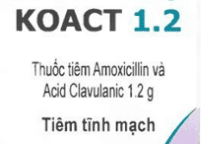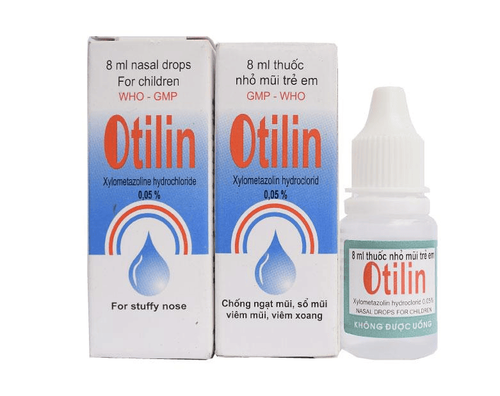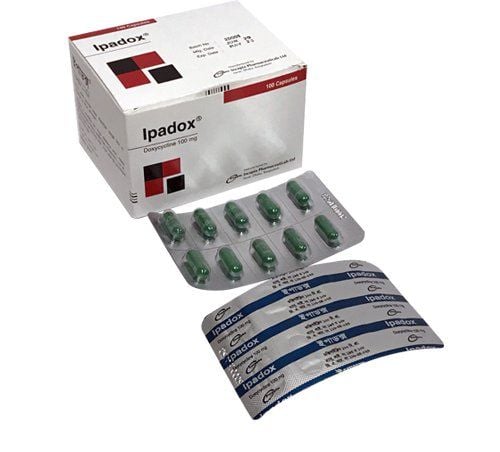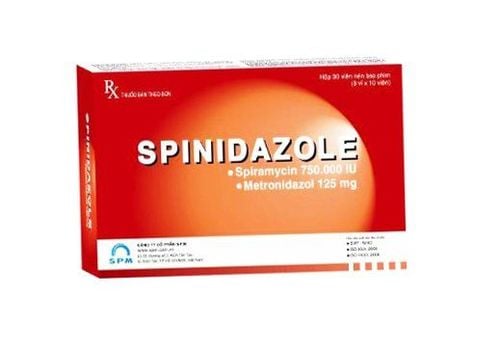This is an automatically translated article.
Sulcilat is a drug belonging to the group of antibiotics, used in the treatment of infections caused by the upper and lower respiratory tract, urinary tract infections, skin and soft tissue infections. The following article will provide complete information about Sulcilat drug, dosage and how to use the drug, and store it properly.1. What is Sulcilate?
Sulcilat belongs to the group of antibiotics used for upper respiratory tract, lower respiratory tract, urinary tract and skin. The drug is prepared in the form of tablets with the antibiotic ingredient used is Sultamicillin in the form of Sultamicillin tosylate dihydrate 750 mg in 1 tablet.
2. Uses of Sulcilate
As mentioned above, Sulcilat belongs to the group of antibiotics that treat infections of the upper and lower respiratory tract, urinary tract, kidney, skin and joint infections. Main ingredient Sultamicillin is an antibiotic belonging to the penicillin group of combination (ampicillin and sulbactam.
The antibacterial spectrum of Sulcilat is as follows
Gram-positive bacteria: Staphylococcus aureus, Streptococcus pneumoniae, Streptococcus pyogenes, Streptococcus viridans, Staphylococcus epidermidis, Staphylococcus faecalis. gram negative: Haemophilus influenzae, Klebsiella sp, Moraxella catarrhalis, Proteus vulgaris, Providencia rettgeri and Neisseria gonorrhoeae, Moraxella catarrhalis, Proteus mirabilis Anaerobic bacteria: Clostridium strain, Peptococcus strain and Bacteroides. systemic bioavailability Peak plasma concentrations are more than twice that of ampicillin also administered orally.Sulcilate diffuses readily into most body tissues and fluids, but has little penetration into the brain and spinal fluid. brain, except in the case of meningitis.Sulcilate is cleared completely and intact in the urine
3. Indications for use of Sulcilate
With a broad antibacterial spectrum, Sulcilate is used to treat the following pathologies:
Patients with upper respiratory tract infections (pharyngitis, sinusitis, colds, laryngitis) Patients with respiratory tract infections Lower respiratory tract infection (chronic bronchitis, pneumonia) Urinary tract infection (acute pyelonephritis, chronic pyelonephritis, cystitis, urethritis, prostatitis). Meningitis Infections of skin and soft tissue structures, bones and joints Intra-abdominal infections caused by beta-lactamase-producing bacteria Gynecological infections People with gonorrhea.
4. Contraindications to the use of Sulcilate
According to the manufacturer, Sulcilate is only contraindicated for people allergic to penicillin derivatives.
5. Dosage & How to take Sulcilat
Sulcilat drug is taken orally, the patient takes the medicine with a full glass of cooled boiled water.
Dosage for adults and children with a body weight over 30kg: 375-750mg each time, 2 times a day. After the body temperature has stabilized or the signs of infection have subsided, an additional dose of Sulcilate should be maintained for 48 hours. On average, the dose of Sulcilate in the treatment of infections can range from 5-14 days or longer when indicated. Hemolytic streptococcal infections, treat for at least 10 days. In patients with impaired renal function and creatinine clearance <= 30 ml/min, dosing is longer than with ampicillin.
6. Side effects of the drug Sulcilate
Some side effects when using Sulcilat
Anaphylactic reactions: skin rash, papules, urticaria, itchy skin, exfoliative dermatitis or anaphylaxis. Digestive system: Diarrhea, loose stools, nausea, abdominal pain, spasms, epigastric pain. Nervous system: the drug may cause drowsiness, fatigue, shortness of breath, headache. Circulatory system: anemia, thrombocytopenia, eosinophilia. Sulcilates may cause elevations in serum aminotransferases or serum bilirubin. Sulcilate can cause interstitial nephritis. Secondary infections: penicillin-resistant staphylococcus aureus, gram-negative bacilli or Candida albicans after prolonged or higher-than-usual dosing.
7. Notes when using Sulcilat drugs & drug storage
For patients who are pregnant women: consider taking Sulcilat if really necessary.
For patients who are breastfeeding, Sulcilat is secreted in breast milk, so do not use the drug in this subject.
When experiencing an anaphylactic reaction, it is necessary to treat immediately with adrenaline, intravenous corticosteroids and oxygen. An airway should be secured and an endotracheal tube ready if needed.
When there is a case of superinfection due to the proliferation of bacteria resistant to Sulcilate, it is necessary to stop Sulcilat and start treatment as prescribed by a specialist.
In patients on long-term treatment, tests should be performed to evaluate the patient's liver and kidney function, hematopoietic function.
Avoid using Sulcilate in viral infections.
Sulcilate drug with the ingredient Sultamicillin tosylate dihydrate is used to treat a number of infections of the respiratory tract, urinary tract and skin. The drug is taken orally and according to the doctor's prescription.
Store Sulcilat medicine in a cool, dark place so that the drug does not affect bioavailability.













